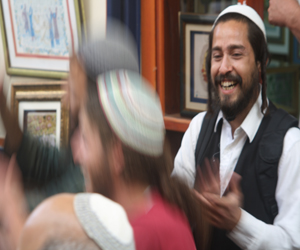Yiddish Comes To The Stage
As early as the 16th century, theatre was embraced by the Jews in the form of playlets put on during the Jewish holiday of Purim, known as Purim Spiels. The original spiels served the purpose of telling the story of Queen Esther, the female heroine of the Purim story. It wasn't until the 19th century, however, that the Yiddish theatre was born. A journalist by the name of Golfarben gets the credit for putting on the first Yiddish theatre act in Iassi, Rumania. As the venture took off, he expanded his operation by taking it to Odessa.
Yiddish Shakespeare
Golfarben took the Jewish klezmorim (klezmer musicians) and badchanim (masters of ceremonies) and put them together with existing non-Jewish actors and singers. This combined group of performers put on shows that Golfarben cobbled together. These first shows were so successful that others began to copy them. Examples of this type of theatre began to pop up in other parts of Europe as well as in America. In time, Yiddish theatre became a well-developed genre that included many styles, from the very literary Yiddish performances of Shakespeare's works, to musicals, comedies, and what became known as "shund" or trash.
The natural offspring of the Yiddish musical theatre boom was a commercial venture. Instead of today's t-shirts, logo-laden mugs, and other memorabilia of performance, the Yiddish musical theatre audience went home carrying the sheet music from the songs in the show they'd just seen. This venture went hand in hand with the growing popularity of the home piano. The early 20th century found many home-owners purchasing their own pianos. The theatre fed the music and song sheet market with lots of material for the ardent home piano player.
One of the earliest hits in sheet music with its origins in the Yiddish theatre was the 1908 Solomon Simulwitz tune, A Brivele der Mama (A Letter to Mother). At first, sheet music was published by the theatres, but publishers caught on and entered the market, adding sheet music for popular klezmer tunes, as well as for the show tunes. The operetta entitled Little Flower was published in 1909 and included the song Chasson Kalleh Mazaltov (Congratulations Groom and Bride) which became a runaway favorite. The tune became a standard at weddings. Plays began to be published, and once a play was published, the rights could be attained so that the plays could be performed by other professionals or amateurs in a variety of venues.
Variety Shows
In addition to the Yiddish theatre, the late 19th and early 20th centuries also saw the rise of vaudeville theatre. Vaudeville was performed as a variety show and included short sketches, acrobatics, and musical works. There were novelty acts and some of them were based on various ethnic stereotypes. Germans, Irish, blacks, and Jews were all fair game to be mimicked in the attempt to entertain an audience. Klezmorim found work on the vaudeville stage working as musicians, in blackface, and as Jewish stereotypical characters.
Another venue that sprang up at this time to provide the klezmorim with a living was the silent cinema. Silent movies always had a musical accompaniment playing in the background and there were 42 cinemas in New York's Lower East Side alone, in the first years of the 20th century. In addition to the dramas, romances, and westerns, the silent films sometimes included a depiction of Jewish life and this gave the klezmorim the chance to play the old, familiar tunes. The Jewish members of the audience always received these tunes with great warmth.

